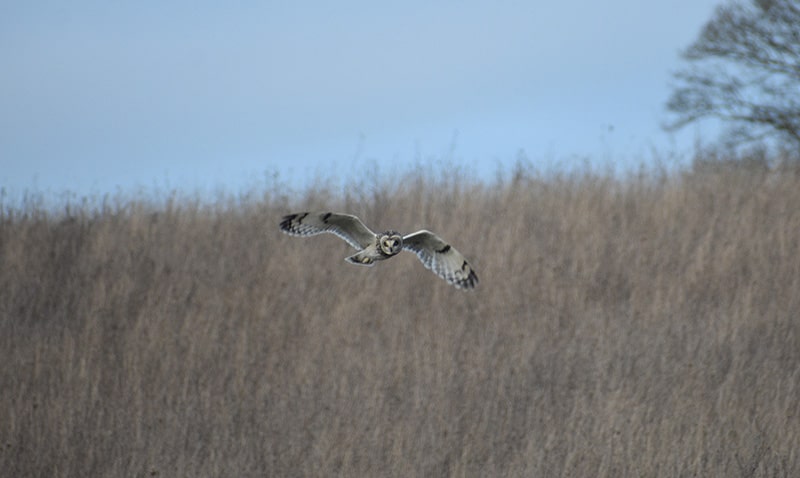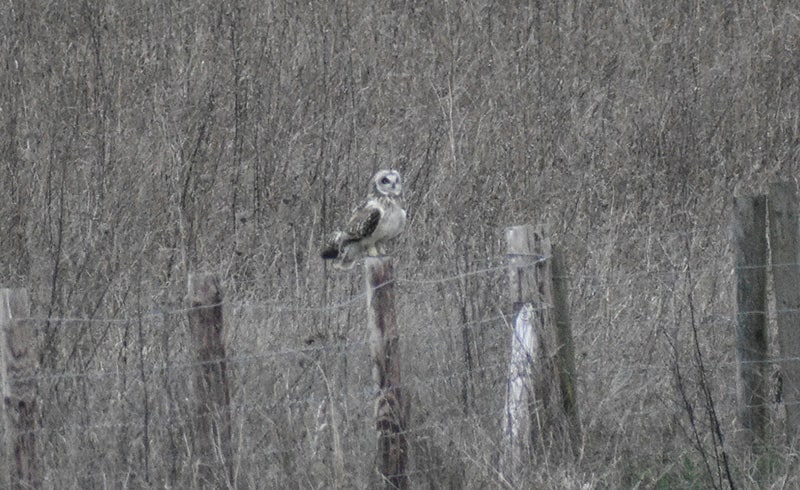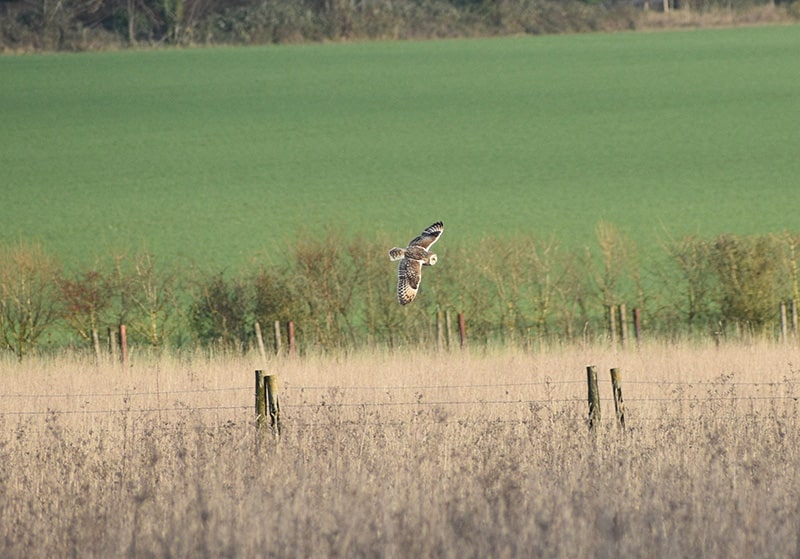Our Rangers, Nick and Claire, were delighted to begin the New Year with a sighting on 1 January 2024 of a new bird species at Magog Down. Nick was able to take some photos of a beautiful Short-eared owl Asio flammeus. They were fortunate to have further sightings during the first two weeks of January of either the same or other short-eared owls. This has given Nick the opportunity to take more photos of an owl in flight and perching on a fence post.


Although there are some resident Short-eared owls in the UK, they are more common in winter as there is often an influx of birds migrating from the continent, including from Scandinavia, Russia and Iceland.
The Short-eared owl prefers open grassland, moorland, coastal marshes and wetland habitats. It can be nomadic, hunting across extensive areas in the search for voles and other small mammals. It is one of the few owls that regularly hunt during the day, either hunting in flight or watching from a perch. On both occasions, the Short-eared owl in the photos was seen quartering over the sheep paddocks at Magog Down. Quartering flight involves a mixture of flapping and gliding low over the habitat, with the bird sometimes hovering briefly before dropping down onto unsuspecting prey. With its large wings and low body weight, it is extremely buoyant and it floats over the ground in long wavering glides with its wings held in a shallow V. It can look very pale but the dark patches near the tips of its wings distinguish it from the even paler barn owl.

The Short-eared owl is medium sized, with a wing-span of roughly one metre, with pale underwings and a mottled brown upper body, and a strongly barred tail. The mottled, darker streaking of the feathers resembles dried grasses and aids camouflage. It has yellow eyes rimmed with dark feathers, giving it a fierce expression that is often visible at long range. It has a large round, blunt head with tiny ear tufts which are usually hidden.
The Short-eared owl is classed as a bird of European Conservation Concern and is listed as ‘Amber’ on the UK List of Conservation Concern because of recent declines in suitable habitat and population numbers. It nests on the ground in thick cover, making a scraped-out hollow, lined with grass and downy feathers. This makes the nest vulnerable to predators.
More information is available on the RSPB website.
If other visitors to the site have seen a short-eared owl, please let us know by using the Contact Us page on the website, or via X (formerly Twitter) – @Magog Down.
If you have any photos that you would like to share, please use the Submit Your Photo page and they are likely to feature on the Gallery page.
Photos by Nick Beale
